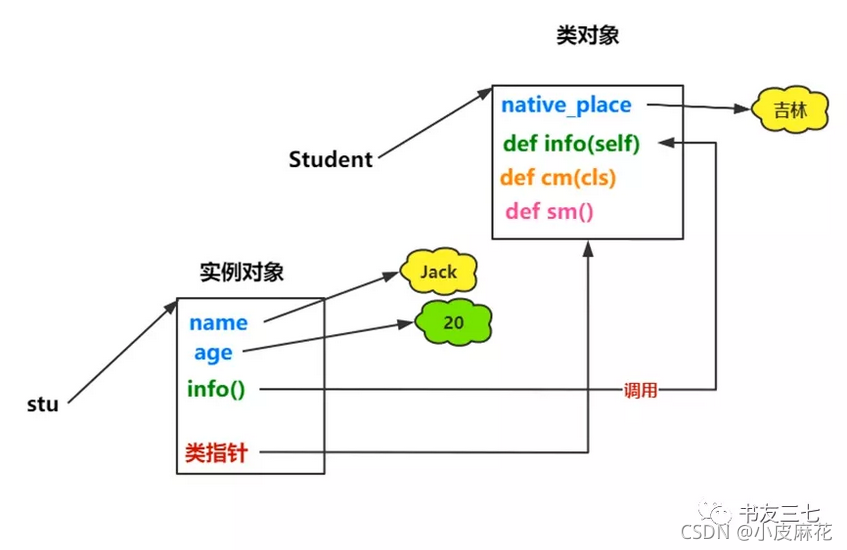类的组成
·类属性
·实例方法
·静态方法
·类方法
创建类的语法(基本模板)
class Student: #Student为类的名字,
native_place='吉林' #类属性
def __init__(self,name,age): #name,age为实例属性,直接写在类里的变量,称为类属性
self.name=name #self.name为实例属性,进行了一个赋值操作,将局部变量name赋值给实例属性
self.age=age
#实例方法
def info(self):
print('我的名字叫:',self.name,'年龄是:',self.age)
#类方法
@classmethod
def sm(cls):
print('类方法')
#静态方法
@staticmethod
def sm():
print('静态方法')
对象的创建
·语法:
实例名=类名()
·意义:有了实例,就可以调用类的内容
·创建Student类的实例对象:
stu1=Student('Jack',20)
print(stu1.name)
print(stu1.age)
stu1.info()

方法的调用
··方法一:stu1.eat() #对象名.方法名
··方法二:Student.eat(stu1) #类名.方法名(类的对象)
类属性,类方法,静态方法
·类属性:类中方法外的变量称为类属性,被该类的所有对象所共享
·类方法:使用@classmethod修饰的方法, 使用类名直接访问的方法
·静态方法:使用@staticmethod修饰的主法, 使用类名直接访问的方法
·使用方法:
print('---------类属性的使用方法-----------')
print(Student.native_place)
print('---------类方法的使用方式-----------')
Student.cm()
print('---------静态方法的使用方式-----------')
Student.sm()
动态绑定属性和方法
·一个Student类可以创建N多个Student类的实例对象,每个实例对象的属性值不同。
·Python是一门动态语言,在创建对象之后,可以动态的绑定属性和方法
·动态绑定属性:
stu1.gender='女' #此属性只允许stu1使用,stu2不可使
·动态的绑定方法:
#为stu1单独绑定show()方法
def shou():
pass
stu1.shou=shou
stu1.shou()
知识点总结
